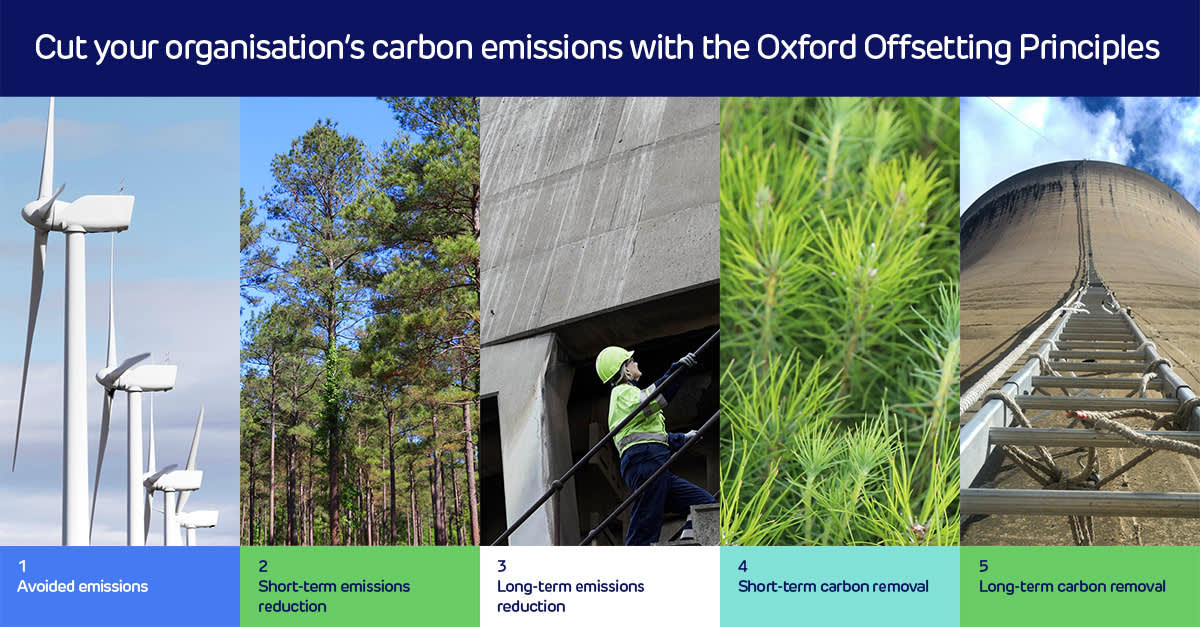Cut carbon in your organisation with the Oxford Offsetting Principles
The Oxford Offsetting Principles are a framework that can help your organisation play its part in getting the UK to net zero emissions.

Many organisations are trying to establish the best way to use carbon offsetting to help decarbonise their operations.
These four principles provide a simple set of guidelines to help your business do just that, and while helping to meet the highest sustainability standards.
Principle one: cut emissions, use high quality offsets, and regularly review offsetting strategy as best practice evolves
If you’re really serious about decarbonising, then before you even think about offsetting, you should first reduce the amount of carbon your organisation emits as much as you possibly can.
You’ll need to cut both your direct (or Scope 1) emissions, and those linked to the energy you use (Scope 2).
This will leave you with indirect emissions from your value chain that you simply can’t abate on your own. This is where you need to encourage organisations in that value chain to reduce their emissions. It’s also where you might consider using carbon offsetting.
When choosing how to buy credits to do that, it’s important that you choose verifiable offsets which follow best practice. And as best practice evolves over time, your approach will need to evolve accordingly.
You should always be as transparent as you can in your approach. This means sharing details of your emissions, how your organisation accounts for them, your targets, and the kinds of offsets you’re using to achieve them.
Principle two: switch to carbon removal offsetting
Currently, the vast amount of carbon offsets offer only to help reduce carbon emissions overall. They do not remove carbon from the atmosphere. Yet this will be essential to achieving net zero. So your organisation should always consider buying offsets that enable carbon removal.
Ultimately, the greater the amount of carbon removal offsets that are bought, the greater the supply is likely to be. This is vital if the UK is to reach its net zero goal by 2050.

Principle three: switch to long-lived storage
Once carbon’s been removed from the atmosphere, it’s important to ensure that it doesn’t re-release back out. Storage can be:
- Short-lived: uncertain or with higher risk of being reversed in decades, or
- Long-lived: low risk of reversal in centuries to millennia
Long-lived storage might include geological reservoirs such as those included in the Humber Cluster. Or they may involve mineralising carbon into forms that’ll remain stable.

Over time, organisation’s carbon strategies should favour carbon removals over emission reduction, and long-lived storage over short-lived storage.
As with the carbon removal market, increasing demand for long-lived storage will help send positive signals to the market - signals that should lead to increased supply.
Principle four: support the development of net zero aligned offsetting
The market for carbon offsets that follow best practice needs to grow massively if we’re to achieve net zero – volumes need to grow, while cost must decline. For this to happen, organisations need to buy credits. Creating demand will help providers to develop new and better products.
Want to talk about how your organisation can decarbonise? Get in touch.
Get in touch

